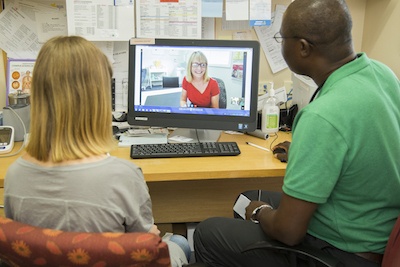A survey of telehealth use in Australia during the COVID-19 pandemic has found that allied health workers were less likely than nurses or doctors to use video conferencing for consultations.
The nationwide online survey of 217 professionals working in primary healthcare, conducted from December 2020 to March 2021, revealed allied health workers were not as likely to conduct telehealth consults by video.
It found 93 per cent of participants had undertaken telehealth consults since the outbreak of COVID-19. Telephone was the most widely used method, with 41 per cent using phone only and 49 per cent using both phone and video conferencing technology. The only participants who used video conferencing alone were five allied health professionals (2.3 per cent).
“Significantly fewer allied health professionals than doctors or nurses undertook less than half of their consultations via video,” researchers from the University of Western Sydney wrote in BMJ Open on January 5.
“Significantly more doctors compared with nurses, and significantly more nurses than allied health professionals undertook less than half of their consultations via phone.”
Zoom was the most popular software for video conferencing followed by Skype, FaceTime and Microsoft Teams.
However, face to face remained the main mode for consultations with 98 per cent of GPs, 79 per cent of nurses and two-thirds of allied health professionals conducting more than half of consults in person.
Although there was no significant difference in perceived quality of care or consultation length for face to face versus telehealth regardless of practitioner type, the study highlighted that missed or delayed diagnoses could be an issue in telehealth.
It identified a “lack of visual cues and ability to undertake physical assessment” as a major barrier, with nearly half saying telehealth models needed to improve through enhanced funding, platforms and software, greater use of video conferencing and increased patient education.
Researchers suggested “wider use of video may expand the scope of problems managed via telehealth in future” and video conferencing should be considered by more health professionals in future telehealth service planning.
The top reasons for phone consults were Covid concerns, prescription requests and regular health or follow-up assessments while the main reasons for video consults included usual ongoing chronic disease care including worsening symptoms, regular health or follow-up assessments and ongoing mental health care.
A second survey of 5100 adults in October 2021, published recently in Frontiers in Psychiatry, suggested that for patients seeking mental healthcare, practitioners appeared to have used video conferencing more than GPs in previous reports.
It found that nearly half of people (42 per cent) had used digital health technologies in 2021 compared with 10 per cent in a 2018 study.
Almost a quarter reported serious levels of psychological distress in 2021, with younger people four times more likely to be affected than older respondents.
Those with serious mental distress were significantly more likely than those without serious psychological distress to consult a healthcare professional via telephone/video conferencing (55 per cent versus 31 per cent) or access healthcare via a phone, email or webchat advice line.
The Macquarie University study found people with and without psychological distress were highly satisfied with the digital health care they received. Authors said results highlighted the continued need for mental health support and access to digital health services, particularly for younger adults and those most impacted by the pandemic.






So a survey of Primary Health determined that Allied health professionals are less likely to use video conferencing for telehealth. Amazingly my survey of Australians killed by stampeding elephants also determined that Allied health professionals are less likely to use video conferencing for telehealth.